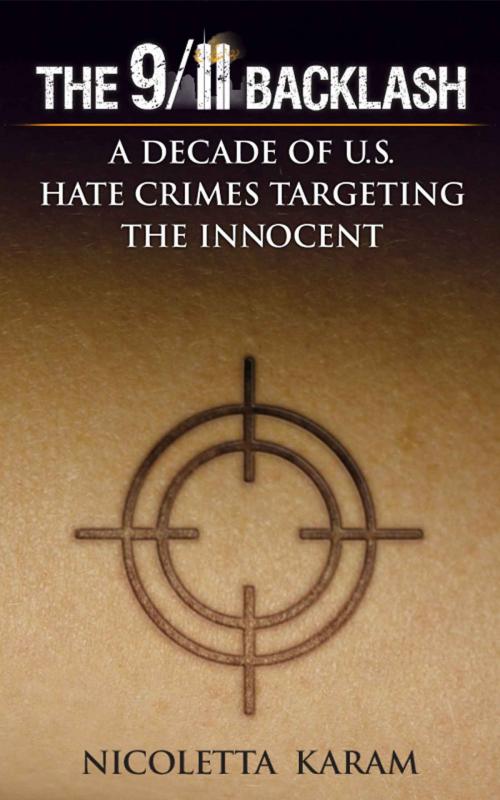The 9/11 Backlash: A Decade of U.S. Hate Crimes Targeting the Innocent
Nonfiction, History, Americas, United States| Author: | Nicoletta Karam | ISBN: | 9781623095390 |
| Publisher: | BookBaby | Publication: | July 31, 2012 |
| Imprint: | Language: | English |
| Author: | Nicoletta Karam |
| ISBN: | 9781623095390 |
| Publisher: | BookBaby |
| Publication: | July 31, 2012 |
| Imprint: | |
| Language: | English |
Many journalists and news commentators deny the existence, length, and intensity of the wave of intolerance that began immediately after 9/11 and continued for years afterward. This book is an attempt to document that this backlash did occur, and was much worse and much longer in duration than many Americans realize. In the years following 9/11, many ethnic Americans and immigrant residents were affected by a surge of hate crimes triggered by the terrorist strikes and the concomitant 'War on Terror.' This book argues that the 9/11 backlash was fueled by 20th-century Islamophobia and Hinduphobia, coupled with local and federal authorities' long-standing unwillingness to acknowledge the reality of hate crimes or handle them with the gravity they deserved. These factors created a "perfect storm" of xenophobia that swept through the U.S. after the terrorist attacks and continued to affect diverse minority communities for more than a decade. Chapter one establishes the need for this book, discussing how reporters and pundits often dismissed or trivialized the bias component of attacks taking place in the aftermath of 9/11. This introductory chapter also explores the incredible ethnic and religious diversity of both bias crime victims and perpetrators. Chapter two provides an overview of pre-9/11 bias attacks, arguing that poor local and federal response to 'Dot-buster' assaults, mosque arsons, and other 20th-century hate crimes created an environment in which post-9/11 xenophobia flourished. Subsequent chapters explore different dimensions of the decade-long backlash, demonstrating how news commentators routinely minimized the severity of post-9/11 hate crimes and local and federal investigators denied that hate crimes were taking place in their jurisdictions. Chapter three acknowledges the South Asian, Christian Arab, and Muslim victims of the terrorist strikes in order to challenge nativist interpretations of 9/11. Chapter four discusses physical assaults that began on September 11, 2001 and continued for years afterwards. Chapter five examines post-9/11 vandalism attacks and arsons at mosques, Sikh prayer centers, and Hindu temples. Synagogues and immigrant-friendly churches were also targeted. Chapter six investigates backlash incidents on academic campuses. Chapter seven explores 9/11 hate crimes targeting minority employees in their workplaces, establishing that taxi drivers, 7-Eleven convenience-store clerks, and gas station attendants were particularly vulnerable. Chapter eight delves into bias-motivated attacks on minority residences in the aftermath of the terrorist strikes. Chapter nine examines death threats and verbal attacks after 9/11. Chapter ten discusses killings linked to the backlash. Each of these middle chapters begins in the immediate aftermath of 9/11 and covers hate crimes in the decade that followed. These chapters also include a discussion of Islamophobic and Hinduphobic television programs and films that coincided with the timing of bias attacks. Chapter eleven investigates 75 reasons why backlash hate crimes are undercounted in the U.S., focusing on the unwillingness of minority victims to report attacks to minimally-sympathetic local and federal authorities. Chapter twelve offers 75 solutions to problems raised by the backlash. This section questions the efficacy of specific 'War on Terror' federal policies and proposes strategies to end post-9/11 discrimination, such as the widespread racial profiling of airport travelers. This book ends with a discussion of the August 5, 2012 Wisconsin Sikh Temple Massacre.
Many journalists and news commentators deny the existence, length, and intensity of the wave of intolerance that began immediately after 9/11 and continued for years afterward. This book is an attempt to document that this backlash did occur, and was much worse and much longer in duration than many Americans realize. In the years following 9/11, many ethnic Americans and immigrant residents were affected by a surge of hate crimes triggered by the terrorist strikes and the concomitant 'War on Terror.' This book argues that the 9/11 backlash was fueled by 20th-century Islamophobia and Hinduphobia, coupled with local and federal authorities' long-standing unwillingness to acknowledge the reality of hate crimes or handle them with the gravity they deserved. These factors created a "perfect storm" of xenophobia that swept through the U.S. after the terrorist attacks and continued to affect diverse minority communities for more than a decade. Chapter one establishes the need for this book, discussing how reporters and pundits often dismissed or trivialized the bias component of attacks taking place in the aftermath of 9/11. This introductory chapter also explores the incredible ethnic and religious diversity of both bias crime victims and perpetrators. Chapter two provides an overview of pre-9/11 bias attacks, arguing that poor local and federal response to 'Dot-buster' assaults, mosque arsons, and other 20th-century hate crimes created an environment in which post-9/11 xenophobia flourished. Subsequent chapters explore different dimensions of the decade-long backlash, demonstrating how news commentators routinely minimized the severity of post-9/11 hate crimes and local and federal investigators denied that hate crimes were taking place in their jurisdictions. Chapter three acknowledges the South Asian, Christian Arab, and Muslim victims of the terrorist strikes in order to challenge nativist interpretations of 9/11. Chapter four discusses physical assaults that began on September 11, 2001 and continued for years afterwards. Chapter five examines post-9/11 vandalism attacks and arsons at mosques, Sikh prayer centers, and Hindu temples. Synagogues and immigrant-friendly churches were also targeted. Chapter six investigates backlash incidents on academic campuses. Chapter seven explores 9/11 hate crimes targeting minority employees in their workplaces, establishing that taxi drivers, 7-Eleven convenience-store clerks, and gas station attendants were particularly vulnerable. Chapter eight delves into bias-motivated attacks on minority residences in the aftermath of the terrorist strikes. Chapter nine examines death threats and verbal attacks after 9/11. Chapter ten discusses killings linked to the backlash. Each of these middle chapters begins in the immediate aftermath of 9/11 and covers hate crimes in the decade that followed. These chapters also include a discussion of Islamophobic and Hinduphobic television programs and films that coincided with the timing of bias attacks. Chapter eleven investigates 75 reasons why backlash hate crimes are undercounted in the U.S., focusing on the unwillingness of minority victims to report attacks to minimally-sympathetic local and federal authorities. Chapter twelve offers 75 solutions to problems raised by the backlash. This section questions the efficacy of specific 'War on Terror' federal policies and proposes strategies to end post-9/11 discrimination, such as the widespread racial profiling of airport travelers. This book ends with a discussion of the August 5, 2012 Wisconsin Sikh Temple Massacre.















